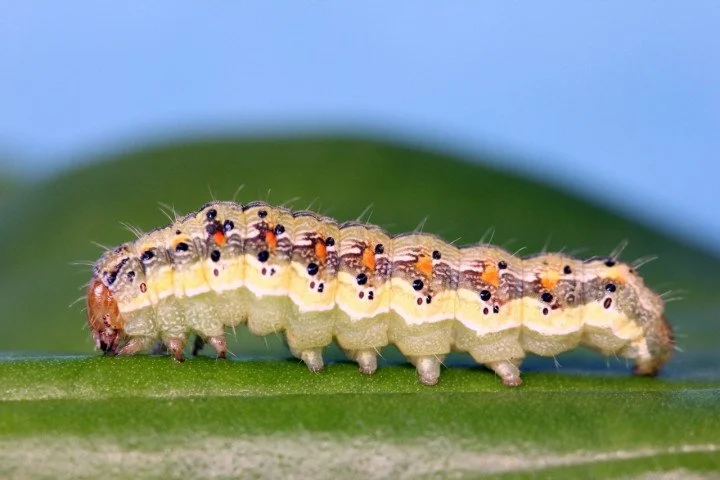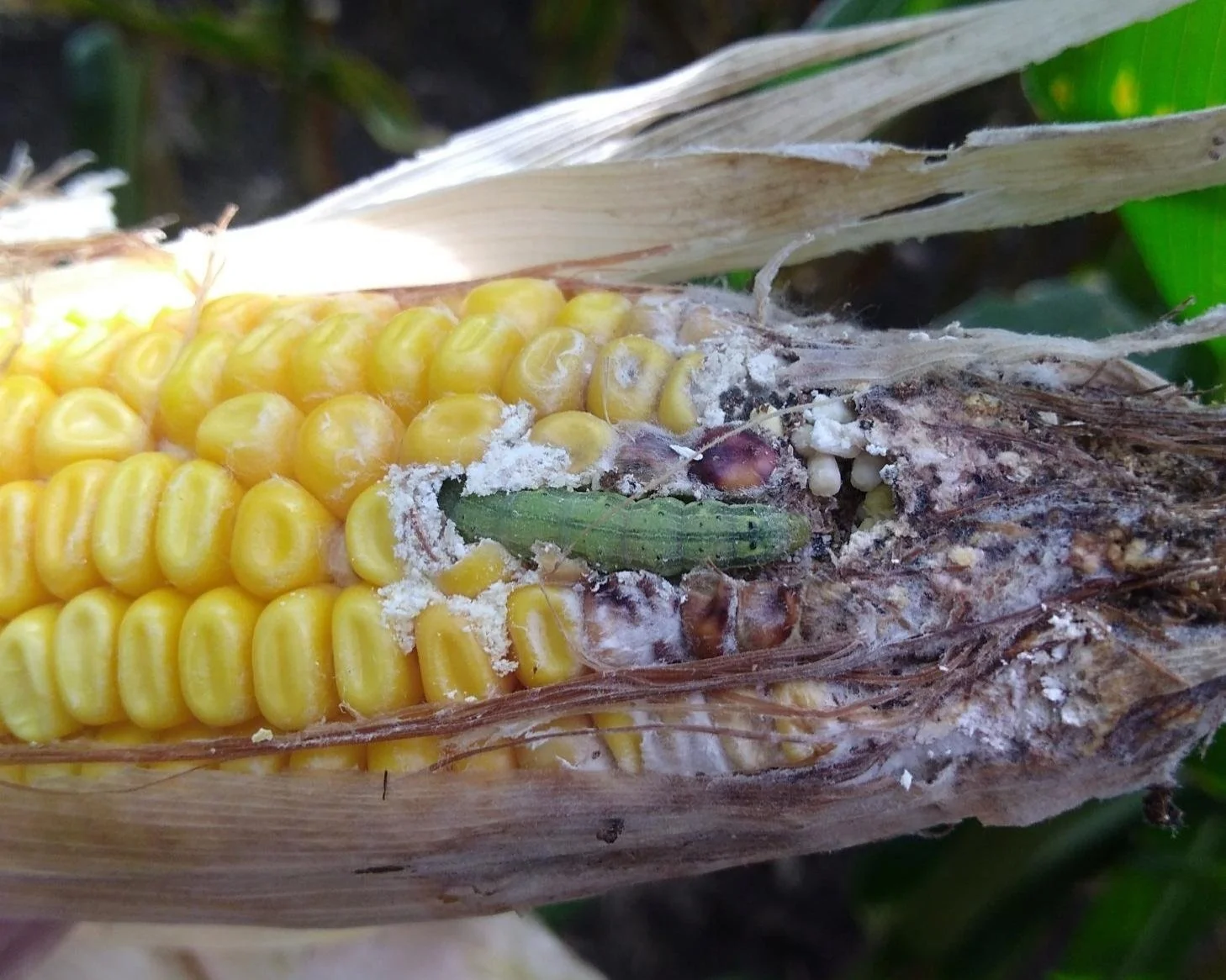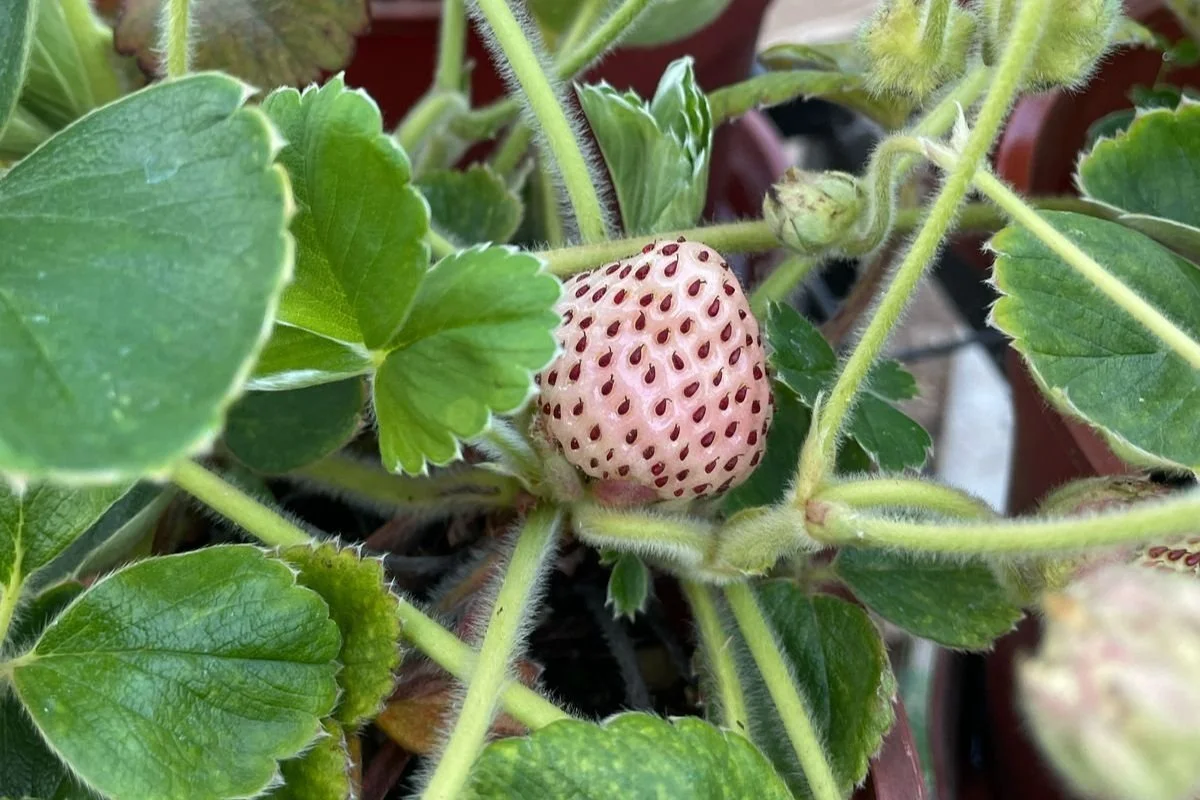Genomics Powering Agriculture
🌍 CASE STUDIES FROM EBP-AFFILIATED PROJECTS
The Earth BioGenome Project (EBP) and EBP-affiliated projects have been advancing scientific breakthroughs worldwide by generating an accessible database of high-quality reference genomes for Eukaryotes across the Tree of Life, today reaching 3,956 assemblies (GoaT, June 2025, EBP Status Live). Access to these reference genomes has accelerated population genomics studies, advanced research identifying pathogens and diseases, and opened doors for conservation actions to help stem the tide of biodiversity loss (covered in depth previously in EBP Life). This issue focuses on how the global network of EBP-affiliated projects — and the genomes they generate — are driving breakthroughs in the agriculture and food industries.
Agriculture is a critically important global industry, but the roadblocks that must be overcome to feed the growing human population can seem insurmountable. Today, farmers and agricultural experts work to suppress pathogens and diseases that threaten crops, eliminate pests and invasive insects without relying on harmful pesticides, and grow even more food, often with shorter optimal growing seasons. Overcoming these obstacles is daunting, but EBP-affiliates offer a lifeline – by harnessing the power of genomics, scientists are decoding the genomic ‘recipe’ for critical global crops, and sometimes even improving the code to benefit humanity.
Rice (Oryza sativa) is the most economically important crop in the world. The genus Oryza comprises two domesticated cultivar species: O. sativa and O. glaberrima. However, there are over 22 wild rice varieties, including Wild Red Rice (O. longistaminata), some of which are being considered for independent domestication. The O. longistaminata reference genome was sequenced as part of 10KP.
Decoding Crops to Increase Yield and Quality
The EBP-affiliated 10,000 Plant Genomes Project (10KP) has generated hundreds of plant reference genomes, including wild rice (Oryza longistaminata). The genus Oryza comprises two widely grown domesticated species, O. sativa and O. glaberrima, as well as over 22 wild rice varieties such as O. longistaminata, which are frequently used to reintroduce beneficial traits into the dominant agricultural species (Vaughan et al., 2003). The downstream research, which utilized the 10KP wild rice reference genome, revealed that its underground stems are capable of regeneration and helped identify key regeneration genes that enable it to regrow annually without replanting (Lian et al., 2024). Identifying these critical regeneration genes is allowing “breeders to design crops with increased yields, climate resilience, and perennial traits–slashing labor and environmental impact” costs of rice cultivation (Dr. Tong Wei). Additionally, the team utilized spatial and single-cell transcriptome sequencing technology to construct a spatial transcriptional map of rice embryos with single-cell resolution for the first time. This study provides important spatial map reference information for identifying rice embryo cell types and lays the foundation for molecular biology research on the functions of different cell lineages the identification of rice embryo cell types and lays the foundation for molecular biology research on the functions of different types of cells during the germination process (Yao et al., 2024). 10KP also generated a detailed spatial transcriptome map of developing corn ears and identified critical genes that control flower formation and increase grain yield (Wang et al., 2024). This research highlights how reference genomes and spatial transcriptomics can inform agricultural and breeding breakthroughs instrumental in genetically increasing crop yields, ear size, kernel number, and the stress adaptation of crops—advancements that collectively benefit the larger agri-economy.
“By bridging spatial omics with genomics, these studies decode the molecular blueprints of crop development. This leap in precision farming promises hardier harvests and a greener future for agriculture” (Dr. Xun Xu).
Arctic Surf Clam (Mactromeris polynyma) is a clam species of importance across the Atlantic. The reference genome for M. polynyma was generated by the Canadian BioGenome Project. Image credit: Downeast Institute.
Commercially important species
Reference genomes boost local bioeconomies by accelerating downstream research projects that are poised to increase the productivity of commercial species. Squalomix, an EBP affiliate that focuses on genome sequencing sharks and rays, also generates genomes for difficult-to-breed aquaculture species, such as the Pacific saury (Cololabis saira). This species is a popular food source in Japan, but is currently suffering a severe decline due to overfishing. Lead researchers from Squalomix hope that this high-quality reference genome will ensure the genomic fitness of the species is maintained and benefit future aquaculture breeding efforts.
In Canada, similar research efforts are being made to improve and maintain commercially viable clam populations in the Atlantic Ocean. Fisheries and Oceans Canada (DFO) conducts regular stock assessments for three marine clam species that were each recently sequenced at the genome level by the Canadian BioGenome Project. These clams represent a significant bioeconomy for Canada, with one of the species (Arctic surf clam, pictured) having an estimated annual value of 100 million CAD (Withers, 2022). DFO scientists at the Bedford Institute of Oceanography (Nova Scotia) use these reference genomes to conduct population genomic analyses and to detect genetic variants within these clam populations. Rapid detection of genetic variants within populations is crucial to accurately identify the effective population sizes required to ensure the long-term genetic health of these species. This allows researchers to scientifically determine ideal fishery limits to maintain a genetically viable wild population of clams across the Atlantic (personal communication, Nick Jeffery, DFO). Genetically strong and diverse populations are generally better equipped to survive the onslaught of emerging pathogens and shifting temperatures, thereby ensuring long-term stability in the fisheries industry.
Corn Earworm Pest was the third-largest invertebrate cause of corn loss in the United States during 2024. The larvae of this moth species bore into the corn and feed on many parts of the plant, making the plants susceptible to secondary beetle infestations and reducing the quality of the vegetable. Image credit: Adam Sisson, Iowa State University.
Genomics for Integrated Pest Management
Every year, up to 40% of the world's crops are destroyed due to agricultural pests. These losses can cost the global economy roughly 220 billion USD annually, and invasive insects can cost an additional 70 billion USD, according to the Food and Agriculture Organization of the United Nations (FAO, 2022). Corn earworm outbreaks were estimated to reduce the overall yield of corn in the U.S. by 47.7 million bushels, making it the third greatest invertebrate cause of corn loss (pictured, left) (Reisig et al., 2025). Immediate access to high-quality reference genomes can provide scientists and agricultural experts a fighting chance in the race against pests and invasive insects. The i5k Initiative is working to sequence five thousand arthropod genomes, one of which (in collaboration with EBP-affiliated USDA-ARS Ag100Pest Initiative) is the rapidly evolving corn earworm pest (Helicoverpa zea). This reference genome has accelerated research into the evolutionary dynamics of this species, shedding light on how the pest rapidly outmaneuvers genetic engineering attempts that previously controlled the species (Taylor et al., 2021). Dr. Taylor and her team have recently identified a gene amplification event within the genome of this moth, and researchers have determined that it is one factor underlying H. zea's rapid evolution of crop resistance (Taylor et al., 2024). This work provides insights into how insects with increased resistance evolution circumvent genetic engineering and might provide a more long-term genetic target for future engineering attempts (Taylor et al., 2024).
The Corn Earworm Pest (Helicoverpa zea) reference genome was sequenced by the i5k and Ag100Pest Initiatives. Image credit: Brad Coates.
The Fight Against Genetic SuperPests: Invasive Hybrids
The selection for advantageous mutations, including gene amplification events, is not the only tool this corn pest relies on to outmaneuver the efforts of farmers. Other researchers have also identified a gene transfer event, where the native pest species acquired a gene from an invasive, but closely related, species Helicoverpa armigera (Nufer et al., 2024). Historically found across Europe, Africa, Asia, and Oceania, invasive H. armigera were first documented in Brazil in 2013 (Gonçalves RM et al., 2009). Due to H. armigera being a highly mobile species, and multiple introductions occurring into both North and South America, multiple instances of cross-breeding between the invasive and local pests (H. zea x H. armigera) appear to have resulted in the transfer of genes (Nufer et al., 2024). To combat this emerging onslaught of gene transfer in these hybrid insects, researchers leveraged the H. zea reference genome from the i5k collaboration with the USDA-ARS Ag100Pest Initiative and a recent H. armigera chromosome-level reference genome generated by EBP-affiliate Darwin Tree of Life (DToL), to track the transfer of genes between these sister species. Researchers identified critical resistance genes from the invasive sister species that were received by the native pest. This transfer of resistance genes (from invasive to local pest) rapidly increased local resistance to pyrethroid insecticides, which had been previously used by farmers to control the native pest species (Nufer et al., 2024). This gene transfer was advantageous to the corn earworm’s survival of the pesticides, resulting in a rapid spread of this beneficial gene throughout the remaining pest population (Nufer et al., 2024). Scientists at ARS are actively developing a resistance remediation measure and a set of alternative control measures to help growers combat these highly adaptive pests (personal communication, Brad Coates).
The Strawberry blossom weevil (Anthonomus rubi) is an invasive pest in North America, first identified in British Columbia, Canada, in 2019. The A. rubi reference genome was generated by the Canadian BioGenome Project. The downstream research and population genomics studies were done by scientists at Agriculture and Agri-Food Canada. Photo credit: Warren Wong.
Genomes Fuelling the Fight Against Invasive Pests
The Strawberry blossom weevil (Anthonomus rubi) is native to Europe, Asia, and parts of North Africa and was first detected in British Columbia, Canada, in 2019 (Franklin et al., 2021) and in Washington State in 2021 (Roueché et al., 2022). This pest damages the flowers and buds of several economically important plants, including strawberry, raspberry, blackberry, rose, and the invasive Himalayan blackberry (Franklin et al., 2021; Canadian Food Inspection Agency, 2021). The economic impact of this pest in Europe varies by year and country. Yield losses have not been estimated in Canada, but in Europe, yield losses for strawberries range from 1.6% to 80-90% in a given year, raspberry losses range from 1% to 38%, and roses experience losses of roughly 70% to 80% (Canadian Food Inspection Agency, 2021). The Canadian BioGenome Project recently generated a reference genome for this pest species. Researchers at Agriculture and Agri-Food Canada are leveraging the pest’s genome, along with ddRADseq single-nucleotide polymorphism detection data from strawberry blossom weevil populations across 10 European countries, to identify its origin and potential routes of introduction. Identifying the origin of the invasive North American population will help researchers find the best locations to search for natural enemies of A. rubi in its native range, which could provide a biological control solution to help manage this invasive insect in the future (Franklin et al., 2024).
Chilean strawberry (Fragaria chiloensis) is renowned for its unique flavor, aroma, and high nutritional content, including minerals, vitamins, and antioxidants. F. chiloensis also holds cultural significance and commercial potential due to its distinctive pinkish-white fruit (personal communication, Pamela Morales). The 1,000 Chilean Genomes Project, in collaboration with scientists from the Instituto de Ciencias Biológicas, generated a fully haplotype-resolved, chromosome-level genome assembly and annotation of F. chiloensis.
Future-proofing Foods with Genome Databases
Pollination by wild animals is a crucial ecosystem service that humans require for growing crops and maintaining greenhouse productivity. The agriculture industry is dependent on both wild pollinators (i.e., bees and butterflies) and managed bee populations (i.e., honeybees) for crop pollination. Over 20,000 bee species have been described globally, of which 12 are commonly used for crop pollination, such as the western honeybee (Apis mellifera), eastern honeybee (Apis cerana), and some bumblebees (i.e., Bombus terrestris). EBP-affiliates such as Project Psyche, Beenome100, and DToL are sequencing hundreds of global pollinators to better understand how to protect native and commercial bee and butterfly populations from pathogens that threaten the long-term survival of these critical pollinators.
Other EBP-affiliates, including ERGA in Europe, AfricaBP, BioPlatforms Australia, and the 1000 Chilean Genomes project in Chile, are working to generate hundreds of reference genomes for the critical foods that feed the growing global population. One such example is the Chilean strawberry (Fragaria chiloensis), which is a native species and the maternal progenitor of the globally cultivated Fragaria × ananassa Duch. The Chilean strawberry is currently being sequenced in Chile by researchers from the Instituto de Ciencias Biológicas (Universidad de Talca) and the 1,000 Chilean Genomes Project. Researchers Raúl Herrera, Alejandra Moya, and Alex Di Genova note that the F. chiloensis reference genome “offers critical insights into its adaptability to environmental stress and reduced susceptibility to pests and diseases compared to F. × ananassa, providing a valuable foundation for future breeding and conservation programs” (personal communication, Dr. Pamela Morales).
Sequencing all agricultural and wild edible plant species, livestock, and both beneficial and harmful insects is a monumental task—but one that EBP-affiliated researchers are already undertaking–sequencing life for the future of life. Ultimately, the genomes EBP-affiliates are generating today will power our collective ability to sustainably feed the growing global population.
Written by: Dr. Anna Bramucci (Earth BioGenome Project: Genomic Insights Coordinator)
Acknowledgements
Thank you to all EBP-affiliated projects and downstream researchers using these EBP reference genomes who submitted valuable contributions to this newsletter. And thank you to all of the funders supporting these monumental research efforts around the world.
Dr. Sunil Kumar Sahu, Senior Scientist at BGI-Research in China, was instrumental in compiling 10,000 Plant Genomes Project (10KP) genomes and advancing agriculture practices. The 10KP Project is led by Dr. Xun Xu (President of BGI Research) and Dr. Tong Wei (Director of Plant-omics Centre) at BGI-Research Wuhan, which is supported by the following sources of funding the Shenzhen Science and Technology Program (Grant no. KQTD20230301092839007, KJZD20230923114607016).
The Canadian BioGenome Project efforts, from sample extraction to genome assembly, are supported by funding from Genome Canada, Genome BC, Genome Alberta, and Genome Quebec. Canadian BioGenome Project samples are processed at one of CGen's three nodes in Canada. Nick Jeffery and Brendan Wringe’s research on clam distributions throughout the Atlantic Ocean is supported by funding from DFO’s Marine Conservation Targets program. Dr. Michelle Franklin is studying the strawberry blossom weevil, and her research on this species is supported by funding from Agriculture and Agri-Food Canada.
In the United States, members from the i5k Initiative and the USDA-ARS Ag100Pest Initiative were instrumental in the collection and dissemination of this work. Thank you to the i5k consortium, specifically Monica Poelchau, and members of Ag100Pest Initiative, especially Kevin Hackett, Anna Childers, Scott Geib, and Sheina Sim. To both Megan Fritz and Dr. Katie Taylor whose work identified gene amplification events in the corn earworm. And USDA’s Brad Coates and O.P. Perera, for highlighting their important work on the corn earworm pest, supported by the USDA-ARS CRIS Projects 5030-22000-019-000D and 6066-22000-085-000-D. Mention of trade names or commercial products in this publication is solely for the purpose of providing specific information and does not imply recommendation or endorsement by the USDA. USDA-ARS is an equal opportunity employer and provider.
And to 1000 Chilean Genomes researchers, Raúl Herrera, Alejandra Moya, Alex Di Genova, and Pamela Morales, for communicating the great work being done to genome sequence the Chilean strawberry (maternal progenitor of the commercially grown strawberry). Work on the Chilean strawberry is supported and funded by ANID-Fondecyt 1210948 and Anillo ATE220043.
References
Canadian Food Inspection Agency (2021) Strawberry Blossom Weevil Fact Sheet. https://inspection.canada.ca/en/plant-health/invasive-species/insects/strawberry-blossom-weevil/fact-sheet
Food and Agriculture Organization of the United Nations (FAO) (2022) Plant Production and Protection Division. Rome. https://doi.org/10.4060/cc2447en date retrieved 29 March 2025. website: https://openknowledge.fao.org/server/api/core/bitstreams/f700bc9e-bdda-4818-9d29-a295d0aad0f6/content
Franklin, M.T., Hueppelsheuser, T.K., Abram, P.K., Bouchard, P., Anderson, R.S. and Gibson, G.A. (2021) The Eurasian strawberry blossom weevil, Anthonomus rubi (Herbst, 1795), is established in North America. The Canadian Entomologist 153, 579–585.
Gonçalves RM, Mastrangelo T, Rodrigues JC, Paulo DF, Omoto C, Corrêa AS, de Azeredo‐Espin AM. (2019) Invasion origin, rapid population expansion, and the lack of genetic structure of cotton bollworm (Helicoverpa armigera) in the Americas. Ecology and Evolution. 2019(13):7378-401.
Guo, X., Wang, Y., Zhao, C., Tan, C., Yan, W., Xiang, S., ... & Xu, X. (2025). An Arabidopsis single-nucleus atlas decodes leaf senescence and nutrient allocation. Cell. 2025.
Lian X, Zhong L, Bai Y, Guang X, Tang S, Guo X, Wei T, Yang F, Zhang Y, Huang G, Zhang J (2024). Spatiotemporal transcriptomic atlas of rhizome formation in Oryza longistaminata. Plant Biotechnology Journal. 2024 Jun;22(6):1652-68.
Nufer MI, Coates BS, Abel CA, O’Neill P, McCracken M, Jain D, Pierce III CA, Glover J, Towles T, Reddy GV, Perera OP (2024). Anatomy of a pest control failure: introgression of cytochrome P450 337B3 alleles from invasive old-world bollworm into native corn earworm (Lepidoptera: Noctuidae). Journal of Insect Science. 2024 Jul;24(4):28.
Reyes-Chin-Wo, S., Wang, Z., Yang, X., Kozik, A., Arikit, S., Song, C., Xia, L., Froenicke, L., Lavelle, D.O., Truco, M.J. and Xia, R. (2017) Genome assembly with in vitro proximity ligation data and whole-genome triplication in lettuce. Nature communications, 8(1), pp.1-11.
Reisig D., Graham S., Bateman N., Studebaker G., Meyer R., Reay-Jones F., Wise K., Owens D., Esquivel I., Buntin G.D., Smith J., et al. (17 February 2025) “Corn invertebrate loss estimates from the United States and Ontario, Canada - 2024. Crop Protection Network.” access date: 11 April 2025. website: https://cropprotectionnetwork.org/publications/corn-invertebrate-loss-estimates-from-the-united-states-and-ontario-canada-2024 DOI: doi.org/10.31274/cpn-20250224-1
Reisig D, Kesheimer K, Bateman N, Studebaker G, Meyer R, Reay-Jones F, Shields E, Owens D, Buntin GD, Seiter N, Hodgson E. (2021) Corn invertebrate loss estimates from the United States and Ontario, Canada–2021. Crop Protection Network. CPN-2019-21. 2021. DOI: doi.org/10.31274/cpn-20220722-0
Tabashnik BE, Mota-Sanchez D, Whalon ME, Hollingworth RM, Carrière Y. Defining terms for proactive management of resistance to Bt crops and pesticides. Journal of economic entomology. 2014 Apr 1;107(2):496-507.
Taylor KL, Hamby KA, DeYonke AM, Gould F and Fritz ML, (2021) Genome evolution in an agricultural pest following adoption of transgenic crops. Proceedings of the National Academy of Sciences, 118(52), p.e2020853118. https://pubmed.ncbi.nlm.nih.gov/34930832/
Taylor KL, Quackenbush J, Lamberty C, Hamby KA, Fritz ML. (2024) Polygenic response to selection by transgenic Bt-expressing crops in wild Helicoverpa zea and characterization of a major effect locus. BMC genomics. 2024 Dec 26;25(1):1247. https://bmcgenomics.biomedcentral.com/articles/10.1186/s12864-024-11160-x
Vaughan DA, Morishima H, Kadowaki K. Diversity in the Oryza genus. Current opinion in plant biology. 2003 Apr 1;6(2):139-46.
Wang, et al. (2024). A spatial transcriptome map of the developing maize ear. Nature plants, 10(5), 815-827.
Withers, Paul. (2022) “Clearwater Seafoods Will Keep Its Arctic Surf Clam Monopoly | CBC News.” CBC News, CBC News, 17 Mar. 2022, www.cbc.ca/news/canada/nova-scotia/clearwater-seafoods-keeps-arctic-surf-clam-monopoly-1.6388801.
Yao J, Chu, Q, Guo X, Shao W, Shang N, Luo K, et al. and Fan L. (2024). Spatiotemporal transcriptomic landscape of rice embryonic cells during seed germination. Developmental Cell, 59(17), 2320-2332.








